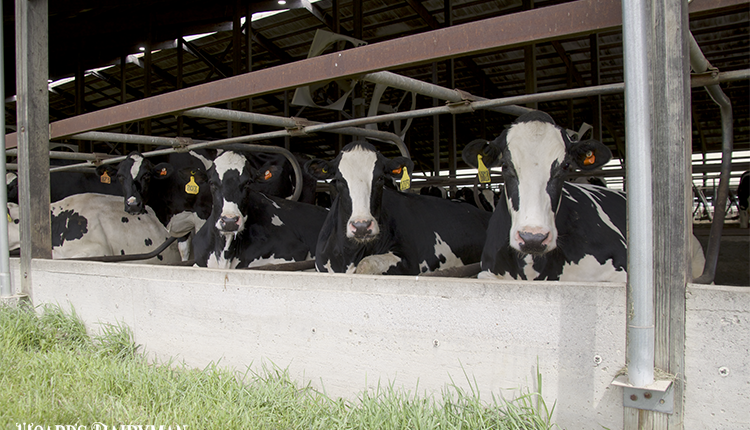The author is CEO of the Council on Dairy Cattle Breeding.
Starting in August 2021, dairy producers will have at their disposal an enhanced Lifetime Net Merit (NM$) index, the selection tool designed to maximize cows’ lifetime profitability. Since its introduction in 1994, Net Merit has been periodically updated to account for new traits, new research, and the most updated dairy market information. This 2021 revision is the most significant in a long time because three new traits have been added and important updates to economic weights were made.
Feed Saved (FS), launched by the Council on Dairy Cattle Breeding (CDCB) in December 2020, represents one of the most important traits impacting herd profitability. Selection of more efficient cows has already been achieved indirectly by including correlated traits in NM$. Direct selection on FS accelerates the genetic progress that can be made to create a more lucrative herd.
In addition to FS, the two other traits added to NM$ focus on improving health and growth of young females. These are Heifer Livability (HLIV) and Early First Calving (EFC), as shown in Figure 1. Improvement in data availability on calves and heifers allowed genomic evaluations for these traits to be developed, covering a critical period of the female’s life that received less emphasis previously in Net Merit.
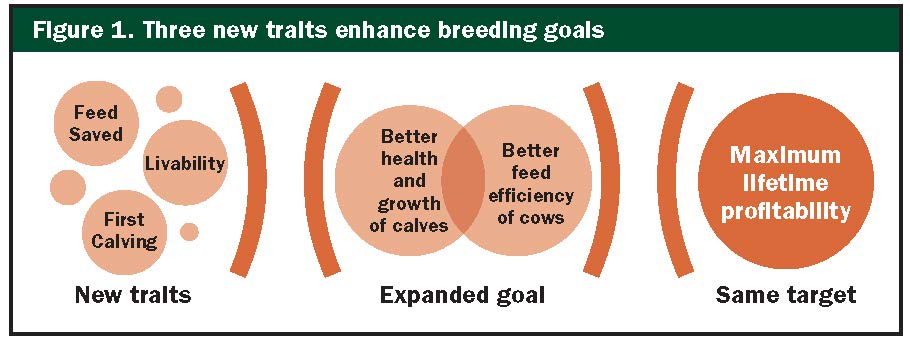
What traits are emphasized in the new Net Merit? Figure 2 shows the relative emphasis given to each trait in the NM$ formula, expressing traits that we select for (positive weights) in green and traits that we select against (negative weights) in orange. The other selection indices published by the CDCB for specific production systems — Cheese Merit (CM$), Fluid Merit (FM$), and Grazing Merit (GM$) — will also be updated in August 2021. Details about the revisions to all four indices can be found at www.uscdcb.com or in the official document, “Net Merit as a measure of lifetime profit: 2021 revision,” written by Paul VanRaden and co-authors at CDCB and USDA’s Animal Genomics and Improvement Laboratory (AGIL). The document can be found at on.hoards.com/netmerit.
Why the expression change?
The relative emphasis shows the contribution of each trait when ranking the animal on the NM$ scale. Illustrating the relative emphasis given to each trait in the formula, as shown in Figure 2, is a new way of expressing the index, compared to the relative economic value that has been published previously to reflect the actual economic importance of the trait. Relative emphasis has the advantage to consider that traits are not estimated with the same reliability and have different ranges of genetic variation, being particularly beneficial when adding new traits with high economic importance and low reliability, such as Feed Saved.
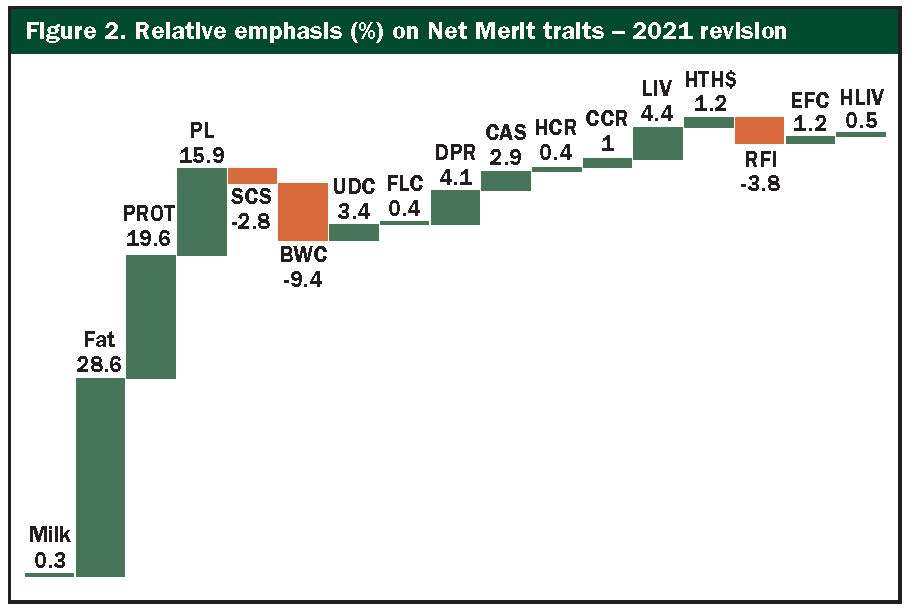
Another change implemented is that the genetic variation in NM$ was previously expressed in a scale based on the True Transmitting Ability (TTA) for a hypothetical unselected population, while it now considers the Predicted Transmitting Ability (PTA) of young bulls that are in the market. These changes make comparison of the new formula with the previous NM$ impractical. It’s not apples to apples.
A clearer direction
The whole idea of using selection indices is to promote balanced genetic progress of all economically important traits for which a reliable evaluation has been developed. The end result is to move the genetic makeup of the entire population of cows in the most desirable direction.
It is the same as saying that we want the next generations to be healthier, more resilient, more efficient, and ultimately more profitable than the current generation. Table 1 shows exactly that. The revised NM$ will select cows that have higher genetic merit for all traits of economic importance in a way that maximum lifetime profitability can be achieved.
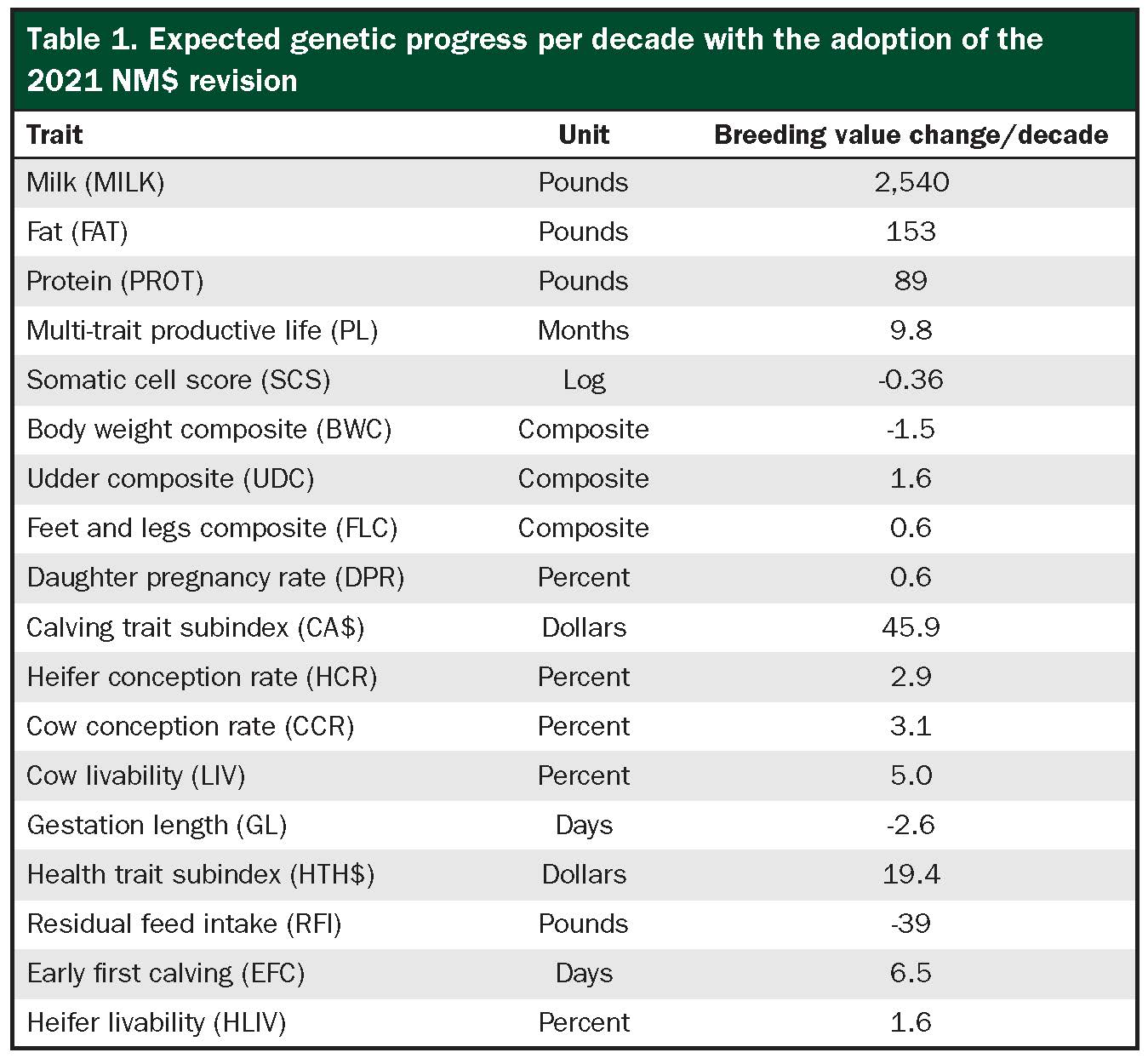
What is the emphasis on the new traits? Even though the most significant change is the inclusion of Feed Saved in NM$, FS is not among the individual traits included in the formula. Instead, NM$ includes the two components of FS: Residual Feed Intake (RFI) with a relative emphasis of minus 3.8% and Body Weight Composite (BWC) with minus 9.4%.
Figure 3 illustrates this relationship. RFI is the difference between the actual and the expected feed intake of a cow. FS is defined as the expected pounds of feed saved per lactation and is a more intuitive way of comparing the efficiency of different animals.
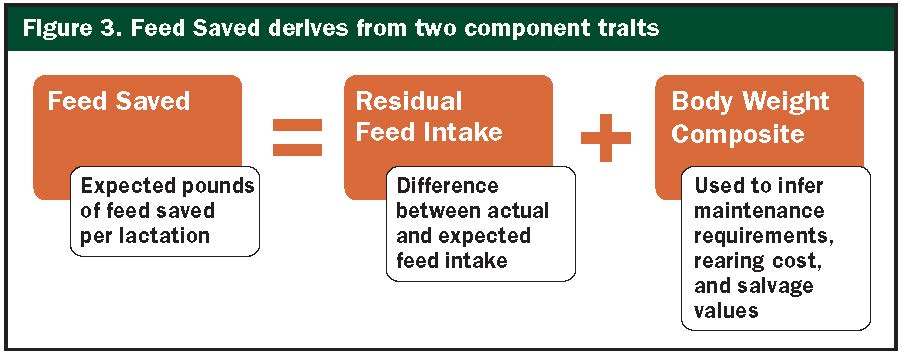
The combination of RFI and BWC results in a total relative emphasis of minus 13.2% for FS in NM$. The other two new traits, early first calving and heifer livability, receive a relative emphasis of 1.2% and 0.5%, respectively.
How are the weights for other traits affected? A general consequence of including new traits in an index is that the relative value of previously included traits is proportionally reduced, even if their economic importance remains the same. This is the case for most traits in the formula such as MILK, PROT, SCS, DPR, HCR, CCR and HTH$. Table 2 shows the five traits that have a reduction in emphasis and the two traits with greater relative emphasis compared to the 2018 revision of NM$. The reasons associated with the change also are discussed.
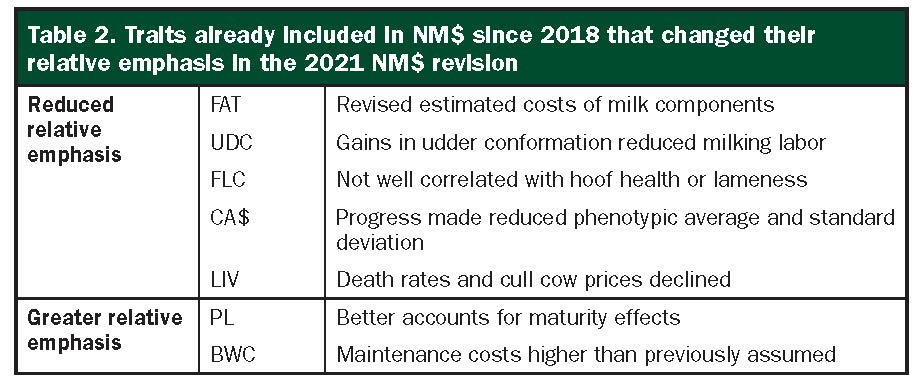
Should we select for smaller cows? The higher emphasis placed on BWC results from recent research showing that the maintenance costs estimated directly from actual feed intake data are higher than the expected feed intake approximated using correlated traits in the previous versions of NM$. Because maintenance costs are proportional to body size, a high negative emphasis is placed on BWC. If two cows present the same milk yield but differ in body size, the smaller cow will be considered more efficient due to lower maintenance needs.
What happens with the NM$ calculation in breeds other than Holstein? Since NM$ was created by USDA’s Agricultural Research Service (ARS) scientists, there has been an effort to keep a universal index that applies to all breeds. The objective of NM$ is to maximize cow profitability in U.S. dairy herds, regardless of the breed. The economic weights are based on market conditions, production costs, and consumer trends.
These are all common to all herds.
What happens if a breed doesn’t have genetic evaluations for a given trait included in the formula, such as Feed Saved? That trait receives zero emphasis, and the respective economic weight is proportionally distributed among the other traits in the index. The index still maximizes profitability in that breed, but without selecting for the missing trait. This has been applied for many years already, and it will not be different with this latest inclusion of new traits.











